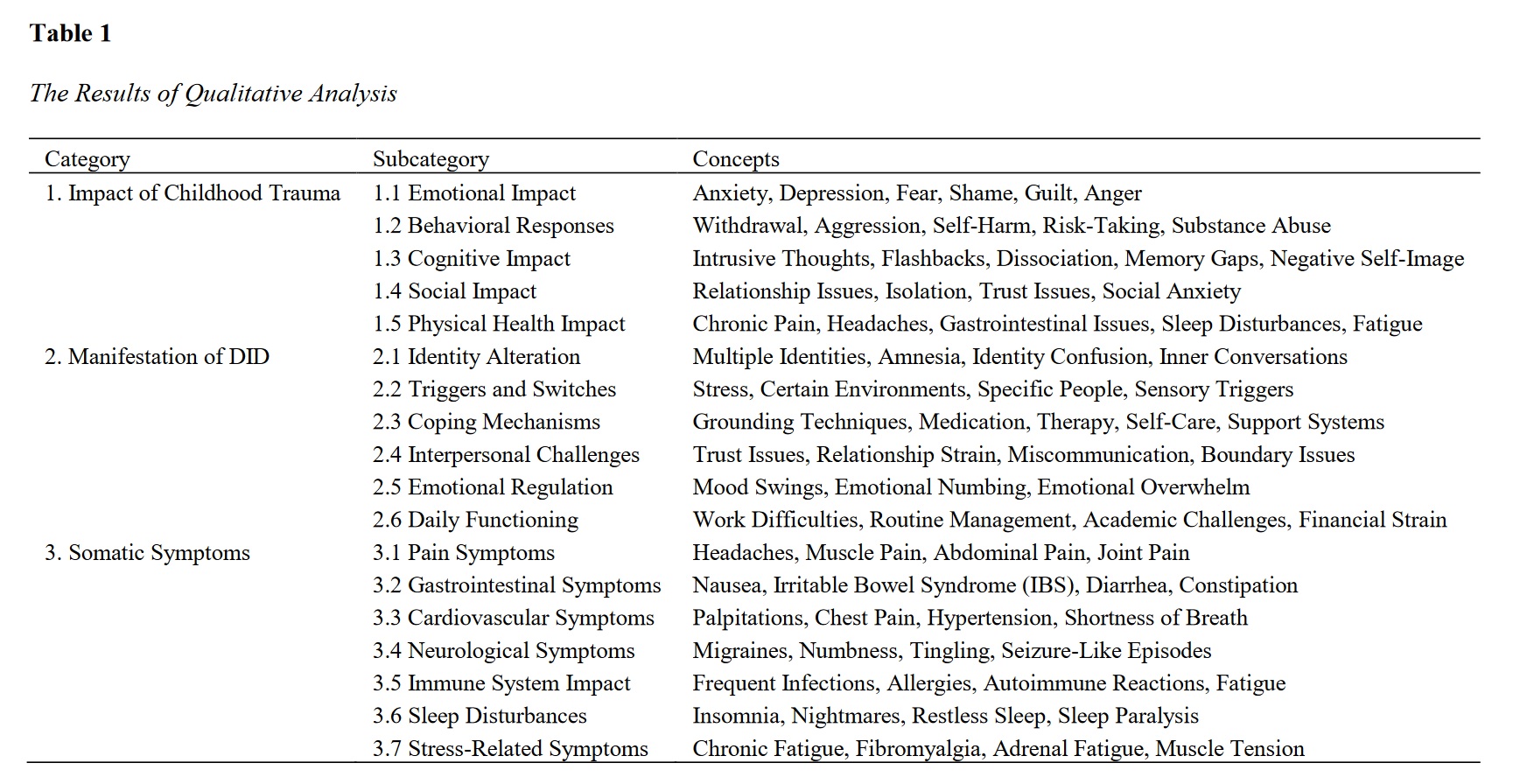Qualitative Examination of the Relationship Between Childhood Trauma, Dissociative Identity Disorder, and Somatic Symptoms
Keywords:
Childhood trauma, Dissociative Identity Disorder, Somatic symptoms, Emotional regulation, Coping mechanisms, Neurobiological impact, Cultural sensitivityAbstract
The objective of this study is to qualitatively examine the intricate relationships between childhood trauma, Dissociative Identity Disorder (DID), and somatic symptoms. This qualitative study involved 32 participants diagnosed with DID and a history of childhood trauma. Data were collected through semi-structured interviews, which were designed to elicit detailed narratives about participants' experiences. Thematic analysis was conducted using NVivo software to identify key themes and patterns within the data. The study continued data collection until theoretical saturation was achieved, ensuring a robust and comprehensive understanding of the phenomena under investigation. The analysis revealed several key themes related to the impact of childhood trauma on emotional, cognitive, behavioral, social, and physical health. Participants reported significant emotional distress, maladaptive behaviors, cognitive disruptions, and social challenges. The manifestation of DID included identity alteration, triggers and switches, coping mechanisms, interpersonal difficulties, emotional regulation issues, and impaired daily functioning. Additionally, participants experienced a range of somatic symptoms, including chronic pain, gastrointestinal issues, cardiovascular problems, neurological symptoms, immune system impacts, sleep disturbances, and stress-related symptoms. These findings align with existing literature on the neurobiological and psychological effects of childhood trauma and dissociation. The study underscores the profound and multifaceted impact of childhood trauma on individuals with DID, highlighting the need for holistic, integrative, and culturally sensitive approaches to treatment. By addressing both psychological and physical dimensions of dissociative disorders, clinicians can develop more effective therapeutic strategies. Future research should focus on expanding the sample size, incorporating longitudinal and quantitative analyses, and exploring innovative therapeutic interventions to further enhance clinical outcomes.
Downloads

Downloads
Additional Files
Published
Issue
Section
License
Copyright (c) 2024 Mehdi Rostami (Corresponding Author); Parichehr Mehdiabadi (Author)

This work is licensed under a Creative Commons Attribution-NonCommercial 4.0 International License.






